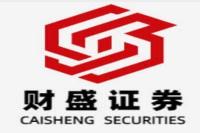Brookfield Joins the Bidding War for KKR: A Deep Dive into the Private Equity Landscape
Meta Description: Brookfield Asset Management enters the bidding war for KKR, marking a significant shift in the private equity landscape. Explore the strategic implications, key players, and potential outcomes of this high-stakes acquisition battle.
Imagine this: Two of the world's most powerful private equity firms, Brookfield Asset Management and KKR, are locked in a fierce battle for a coveted prize – a massive infrastructure company. This isn't just another corporate acquisition; it's a clash of titans, a fight for market dominance, and a window into the evolving landscape of private equity.
The stakes are high, the players are seasoned, and the drama is unfolding right before our eyes. As the battle rages on, it's time to delve deeper into this intriguing saga, understand the motivations behind this acquisition, and explore the implications for the future of the private equity world.
Brookfield: A Force to be Reckoned With
Brookfield Asset Management, the Canadian behemoth known for its expertise in infrastructure and real estate, is no stranger to big-ticket acquisitions. With a history of making strategic moves, Brookfield has been steadily expanding its global footprint, amassing a portfolio of assets spanning diverse sectors. Their entry into the KKR bidding war is a clear indication of their ambitious plans and their unwavering commitment to staying ahead of the curve in the evolving investment landscape.
KKR: A Private Equity Powerhouse
KKR, a name synonymous with private equity prowess, has a proven track record of success in various industries. Known for their aggressive deal-making and their focus on creating value, KKR has a reputation for transforming businesses and generating substantial returns for their investors. In this bidding war, KKR is looking to solidify its position as a leading player in the global infrastructure market.
The Bidding War: A Game of High Stakes
The acquisition of KKR is not just about a single company; it's about a battle for control over a critical sector - infrastructure. This sector is experiencing phenomenal growth, driven by the increasing demand for sustainable and resilient infrastructure projects across the globe.
Understanding the Dynamics
This bidding war is a fascinating study in the complexities of the private equity world. It's a story of strategic maneuvering, financial prowess, and the relentless pursuit of maximizing returns. To understand the dynamics, let's explore some key aspects:
1. The Role of Sovereigns:
The involvement of sovereign wealth funds on both sides of the bidding war adds another layer of intrigue. These funds, backed by the wealth of nations, bring immense financial resources and strategic influence to the table. Their presence signifies the growing global significance of infrastructure investments and the allure of long-term, stable returns.
2. The Battle for Market Share:
The acquisition of KKR would grant the winning bidder a significant advantage in the global infrastructure market. It would provide access to a vast portfolio of assets, a robust network of relationships, and a team of seasoned professionals. This would allow the winning firm to solidify its position as a leading player and potentially reshape the landscape of the industry.
3. The Implications for the Future:
The outcome of this bidding war will have far-reaching implications for the private equity industry. It will set a precedent for future acquisitions, shape the strategies of other players, and influence the direction of the global infrastructure market.
Navigating the Uncharted Waters
The bidding war for KKR is a compelling story, full of twists and turns. It's a glimpse into the world of high-stakes acquisitions, where financial giants clash and strategic decisions shape the future of industries. As we watch this play unfold, it's important to understand the key factors at play, the motivations of the players, and the potential impact on the global investment landscape.
Keyword: Infrastructure
Infrastructure: The Cornerstone of Growth
Infrastructure is the backbone of any thriving economy. It encompasses the essential assets that underpin the functioning of a society, including transportation networks, energy grids, communication systems, and water management systems.
The Importance of Infrastructure Investment:
Investing in infrastructure is crucial for several reasons:
- Economic Growth: Robust infrastructure facilitates trade, supports businesses, and creates jobs, driving economic growth and development.
- Social Development: Infrastructure plays a key role in improving the quality of life, providing access to essential services like healthcare, education, and sanitation.
- Environmental Sustainability: Investing in sustainable infrastructure, such as renewable energy sources and efficient transportation systems, can help mitigate climate change and reduce environmental impact.
The Global Landscape of Infrastructure:
The global infrastructure market is experiencing rapid growth, driven by factors such as urbanization, population growth, and the increasing demand for sustainable solutions. This growth presents lucrative opportunities for investors, particularly in emerging markets, where infrastructure development is a critical priority.
Challenges and Opportunities:
While the infrastructure market offers significant potential, it also faces challenges such as:
- Funding Gaps: The need for infrastructure investment far outpaces available funding, creating a financing gap.
- Regulatory Hurdles: Complex regulations and bureaucratic processes can hinder project development and implementation.
- Technological Advancements: The rapid pace of technological innovation requires continuous adaptation and investment in new infrastructure solutions.
The Future of Infrastructure:
The future of infrastructure is intertwined with the adoption of new technologies, such as artificial intelligence, big data, and the Internet of Things. These technologies have the potential to transform infrastructure systems, making them more efficient, resilient, and sustainable.
Frequently Asked Questions:
Q1: What are the main factors driving the growth of the infrastructure market?
A1: The main drivers of growth in the infrastructure market include urbanization, population growth, the need for sustainable solutions, and the increasing demand for digital connectivity.
Q2: What are the key challenges facing infrastructure development?
A2: Key challenges include funding gaps, regulatory hurdles, and the need to adapt to rapid technological advancements.
Q3: How are new technologies shaping the future of infrastructure?
A3: Technologies like AI, big data, and the IoT are enabling more efficient, resilient, and sustainable infrastructure systems.
Q4: What are the potential benefits of investing in infrastructure?
A4: Infrastructure investment can drive economic growth, improve social development, and foster environmental sustainability.
Q5: What are the key considerations for investors in the infrastructure market?
A5: Investors should consider factors such as project feasibility, regulatory environment, and potential risks and rewards.
Q6: What is the role of sovereign wealth funds in the infrastructure market?
A6: Sovereign wealth funds play a significant role in financing infrastructure projects, particularly in emerging markets. They provide long-term capital and strategic guidance, contributing to the development of vital infrastructure assets.
Conclusion:
The bidding war for KKR is a testament to the growing importance of the global infrastructure market. It highlights the strategic significance of infrastructure assets and the intense competition among leading private equity firms to secure a foothold in this dynamic sector. The outcome of this acquisition will have profound implications for the future of the industry, shaping the strategies of players and influencing the direction of investment flows. As the battle for dominance continues, it's clear that infrastructure will remain a key focus for investors, driven by the insatiable demand for efficient, sustainable, and resilient infrastructure solutions.



